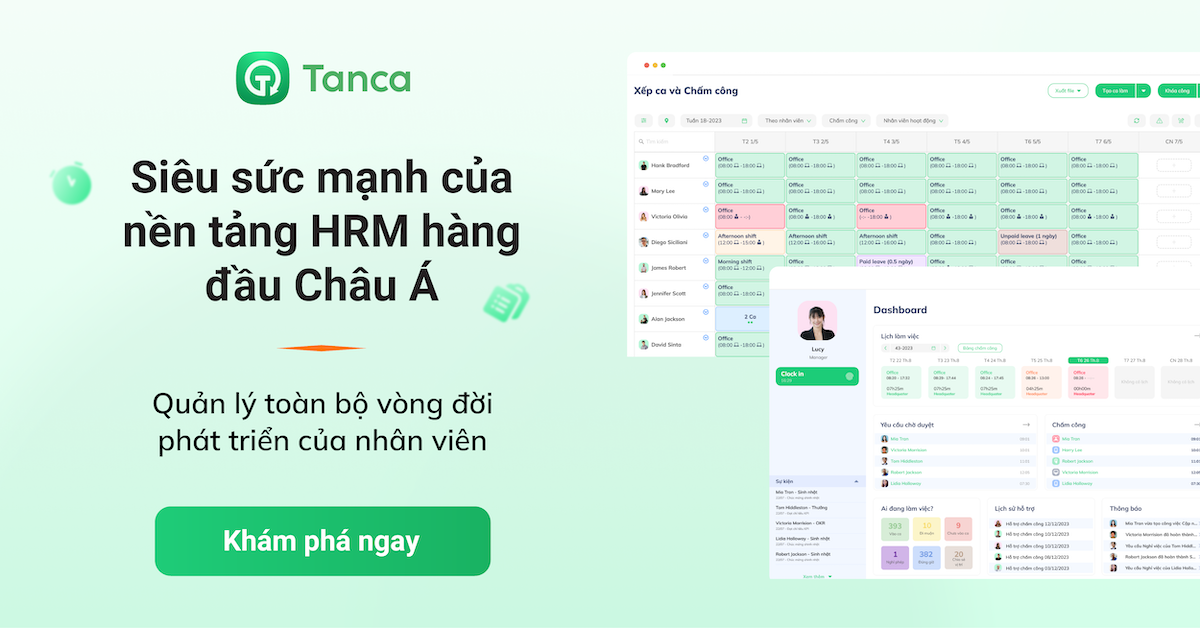What is Purchase Intent? Purchase Intent, also known as purchase intention, is an important concept in the field of marketing and SEO. It refers to the level of readiness and desire of users in making a purchase transaction. Let's learn more about this concept with Tanca through the article below!
What is Purchase Intent?

Purchase intent is a key concept in the field of marketing and sales. It is a necessary indicator that helps marketers predict and evaluate the likelihood that customers will make a purchase in the future. Through predictive models based on historical data, they can determine the probability that a customer will buy a specific product or service.
Measuring and analyzing purchase intent has become an indispensable marketing tool, widely used in many different types of research. From testing new products, testing packaging, to evaluating the effectiveness of advertising campaigns, purchase intent is an important indicator that helps marketers make strategic decisions.
Understanding the purchase intent of target customers not only helps businesses design effective marketing campaigns, but also optimizes user experience, increases conversion rates, and drives long-term sales.
Purchase Intent Rating Scales
In consumer behavior research, the five-point purchase intention scale is a popular tool for assessing the likelihood that a customer will buy a particular product or service. The common levels, arranged from low to high, include:
- Definitely will not buy.
- Probably will not buy.
- Unsure.
- Probably will buy.
- Definitely will buy.
Empirical studies have shown that each of these purchase intention levels can be mapped to a certain probability of actual purchase. A generally used rule of thumb is:
- 75% for "Definitely will buy".
- 25% for "Probably will buy".
- 0% for all other three levels.
However, this is only a general rule, as the probability of purchase depends on other factors.
For example, for products/services in categories with longer purchase cycles, the probability of actual purchase is often lower than for categories with shorter cycles, even if the initial purchase intent is similar. In addition, for high-priced items such as technology or durable goods, price also plays an important role in the customer's final purchase decision.
Although this scale is not always accurate, Purchase Intent is widely accepted because it is highly generalizable, measurable, and has the ability to predict customer purchase behavior. Many companies have used purchase intent or a set of related indicators as a basis for assessing and predicting customer behavior. However, incorporating other factors such as attitude, subjective norms, perceived behavioral control, etc. will help improve the accuracy of these predictions.
The Development Cycle of a Purchase Intent

Stage 1: Need Recognition
In the awareness stage, customers begin to become aware of their need to buy a particular product. For example, they may realize that their sofa is outdated or no longer fits their preferred room design, or that it has fallen into disrepair. At this stage, customers have recognized the need to buy, but are not necessarily ready to convert this need into an intention to buy, because they still need to conduct some preliminary research and comparison.
The need recognition stage marks the beginning of the buying process. Customers have identified a problem or gap that needs to be solved by purchasing a particular product. However, they still need more information and consideration before moving on to the next stage of developing an intention to buy.
Stage 2: Interest and Search
The second stage in the consumer buying process is information search and gathering. At this point, customers begin to research and explore products and services in the marketplace before making a final decision.
Customers have a variety of sources of information to consult. For example, in the sofa example, customers may browse furniture store websites, order product catalogs, or talk to friends and family about their previous purchases.
Customers at this stage have only a weak intention to buy and are not sure which retailer to buy from. Knowing that customers are at this stage in the buying journey will help guide marketing activities such as advertising or other forms of awareness of your brand.
Stage 3: Desire
Once customers have gathered enough information to make a purchase decision, they will be in a position to consider and evaluate available target products. At this stage, their purchase intention has been solidified, and you’ll be interested in whether they’re considering buying your product.
At this stage, customers have identified the optimal choice based on comparing products. They may consider criteria such as functionality, design, cost, and other factors to make a final decision. With the purchase intention clear, retailers and suppliers need to focus on convincing customers to choose their product through activities such as advertising, promotions, and customer support.
Stage 4: Action
Near the end of the customer journey, they will actually buy and use the product, either immediately or at a later point. However, research shows that there is sometimes a discrepancy between what customers intend to do and what they actually do. For example, a customer may have decided to buy a corner sofa, but change their mind when they enter the store to make the transaction. So at this stage, you should gather as much information as possible about the details of the intended purchase decision, such as how much the customer intends to spend. This will help you better meet their requirements.
As you can see, purchase intent is much more complex than it seems, and customers have different purchase intentions at different transition points in the customer journey. They may move from doing a broad search for products and services to looking at reviews for a specific product right before they are ready to make a purchase. Knowing where your customers are on that journey is important if you want to meet their needs well.
Factors that influence Purchase Intent
Seasonality
Some products tend to be sold at specific times of the year. However, this is not always obvious, so make sure you survey your customers about whether and how seasonality affects their purchase intention for your products. For example, some people only buy rain boots when it starts to rain, but others are more discerning and buy them during the hot season to get a better price.
It is essential to understand the impact of seasonality on customer purchase intention. This will help you plan and adjust your marketing strategy accordingly, meeting the needs of customers at each specific time. In this way, you can maximize sales and increase customer satisfaction.
Existing customer satisfaction
This is a key factor in determining purchase intention. Tanca believes that dissatisfied customers are more likely to buy from other sources.
Understanding customer satisfaction is important because it directly affects their purchase intent. Satisfied customers are more likely to return and continue to buy from you, while dissatisfied customers may switch to competing brands. Therefore, investing in measuring and improving customer satisfaction will help you retain existing customers and attract new ones.
Customer Demographics
Depending on your product or service, your customers' demographics can influence their purchase intent. For example, customers with different incomes may purchase certain items at different frequencies. When collecting data on purchase intent, Tanca recommends that you collect customer demographics such as age, occupation, income, etc. to compare purchase intent across different customer segments.
Advertising
The purpose of advertising is to drive sales, so you should expect it to influence purchase intent, hopefully in a positive way.
Advertising plays a key role in influencing customer purchase intent. “Right person, right time” advertising campaigns can stimulate demand and create new purchase intent. At the same time, it is essential to track and evaluate the results of advertising activities so that you can adjust and improve them to achieve better results.
The role of Purchase Intent in the digital market
In the digital age, purchase intent plays a key role in the business operations of enterprises, especially in the field of e-commerce.
Consider the case of Amazon - the world's leading online retail giant. Amazon considers deep understanding and accurate capture of customer purchase intent as key to maintaining and developing its leading position. They invest heavily in collecting and analyzing detailed data on users' behavior, interactions, access, and purchasing decisions on their platform. This helps Amazon to:
- Personalize the shopping experience for each customer deeply, through product suggestions, promotions, and appropriate marketing content.
- Accurately predict customers' needs and purchasing thoughts to optimize the supply and delivery process.
- Continuously improve the interface, features, and user experience to increase conversion rates.
- Build optimal marketing and advertising strategies, stimulate customers' needs and purchasing intentions.
By understanding and creatively applying purchasing intentions to development, Amazon has become an e-commerce "boss", continuously growing revenue and expanding market share over the years.
Not only Amazon, but also major social media platforms such as Facebook, Instagram, and TikTok consider purchase intent as one of the most important factors to optimize their business operations. Data on user intent helps them design more effective advertising and marketing content, driving the number of potential customers.
It can be said that purchase intent is the "golden key" that helps digital businesses gain a deeper understanding of customer behavior, needs, and psychology. From there, they can build extremely suitable marketing and sales strategies, boosting sales and sustainable growth.
Considerations when using Purchase Intent
- First, purchase intentions tend to be subjective and volatile unless the influencing factors are well understood and assessed. Assessments and predictions based on purchase intentions should be made with caution.
- Second, purchase intentions can be strongly influenced by the absolute price of a product or service. Price is an important factor that can significantly alter a customer's purchase intention.
- Third, purchase intentions vary significantly across markets, especially between developed and developing countries. First and second choices can be very high in emerging markets.
- Fourth, purchase intentions are highly sensitive to specific factors such as advertising quality, product imagery, price, product line size, use of emotional language, etc. These practical factors can significantly affect customers' purchase intentions.
- Therefore, when using and analyzing purchase intentions, businesses need to consider and deeply understand these characteristics to develop effective marketing and sales strategies.
With this article by Tanca, we hope you have a better understanding of the concept of Purchase Intent. Purchase Intent is one of the key indicators in business, requiring deep understanding and skillful application to bring about optimal business results for the business. The businesses need to master the mentioned characteristics to be able to understand and apply Purchase Intent correctly.










